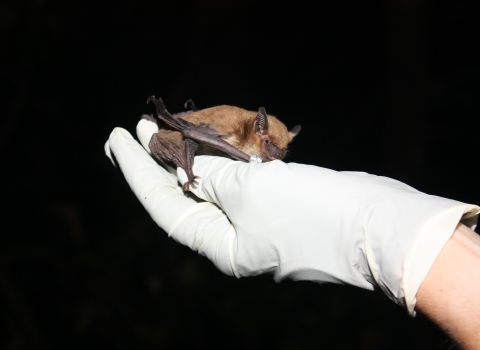Cardiologists advise patients to avoid tobacco use, exercise regularly, and stick to a heart healthy diet to prevent heart attacks. Sticking to the doctor’s directions often prevents costly and painful trips to the Emergency Room.
For some species of native western plants that ER is the Endangered Species Act (ESA). Although plants don’t smoke, skip exercise or eat too much fatty food, many species face threats to their wellbeing. In some cases, stewardship determines how at risk they are for extinction – or in human terms, the probability of a fatal heart attack.
Fortunately for such plants in precarious positions, there are proactive conservation actions that can be taken early on – before there’s an acute condition to prevent the botanical equivalent of a myocardial infarction. Such botanical checkups prevent costly trips to the ESA. For Packard’s milkvetch (Astragalus cusickii var. packardiae), one of the most rare plants in Idaho, such a trip was never needed.
Pat Packard first discovered this rare plant in 1980, hence its name. It occurs on public lands managed by the Bureau of Land Management in Payette County in southwestern Idaho. The plant wasn’t documented again until years later, when Boise botanist Michael Mancuso relocated it. The U.S. Fish and Wildlife Service (Service) later hired Mancuso to routinely monitor the plants’ health. In 2010 Mancuso’s routine checkups on the plant indicated the unique plant was showing an acute case of habitat destruction caused by unauthorized off-highway vehicle activity. A local off-highway vehicle park had recently closed, shifting use into the Big Willow area and damaging the unique and limited habitat needed by Packard’s milkvetch. As a result, the plant was designated a candidate for listing under the ESA.
“In the Service’s Idaho Fish and Wildlife Office, we apply an adaptive management approach to plant conservation, and monitoring is a critical part of that. It helps us identify potential issues early on, and it also informs the conservation actions we develop with partners to help alleviate the threats and protect rare plant species,” said Karen Colson, a botanist with the Service.
Steve Duke, a former senior biologist with the Service, agreed. “By committing more resources for monitoring upfront, we were able to use the resulting information to work with the BLM and private landowners to address the threat, and avoid listing by effectively conserving the plant.”
The BLM really stepped up to ensure the unique forb received the necessary conservation treatment. The salient conservation action needed was a fix for the unauthorized off-highway vehicle use causing the habitat destruction. Off-highway vehicles were also trespassing on private property to access public land. The BLM worked with the adjacent private landowners and local off-highway vehicle enthusiasts on a compromise to exclude off-highway vehicle access to sensitive sites in return for access to an alternative riding area with designated trails and an open riding area.
The BLM and the Service also collaborated on a long-term conservation agreement that guides Packard’s milkvetch conservation over the next 20 years. Conservation measures are being implemented as part of that agreement, including exclosure fences around particularly sensitive Packard’s milkvetch occurrences, treatments to control the invasive nonnative plant species around Packard’s milkvetch habitat, native forb plantings to increase needed pollinators in the area, and a Packard’s milkvetch grow-out and outplanting program. The Service and BLM also continue to monitor the area in an effort to determine effectiveness of current conservation actions and guide future conservation efforts.
“Successful species conservation in Idaho can only be achieved through strong partnerships. We are fortunate to work so closely with employees at the BLM in Boise who are both creative and proactive in their management of this species, as well as the adjacent private landowners and numerous other stakeholders that contributed valuable efforts and resources to help protect this rare plant,” Colson said.
The Idaho Botanical Garden, for example, helped grow the native forbs for planting, and the Agricultural Research Service and Idaho Natural Heritage Program have been providing help with pollinator studies. In addition, the Master Naturalist Program, Idaho Native Plant Society, and Payette County all donated time and effort.
Thanks to this collaborative, adaptive management approach, the ESA listing process was avoided. The accomplishment is the ideal outcome the Service aspires to when approaching a conservation challenge.
“Good conservation involves maximizing our resources by approaching the problem proactively and solving challenges before formal ESA implementation becomes necessary,” said Duke, who retired in 2015. “Folks are out there treating weeds and planting native forbs to enhance the habitat for this plant. Employing a proactive approach is a mind-set; we’re solving problems up front.”
He explained the Service’s approach is analogous to treating a patient before an ER visit becomes essential. An ESA listing process is a last resort. Ideally, the up-front conservation can preclude the need for a surgical listing. Although successful long-term conservation of Packard’s milkvetch will require continued collaboration, this is an example of how Service staff collaborated early and the resulting conservation work paid off for both the plant and everyone involved.
Indeed, an early diagnosis of the conservation challenge and a concerted focus of resources on the ground with willing partners can avert acute conservation conditions and make for a happy ending, sans an ESA listing.
“When agencies collaborate with each other, local landowners, and other willing partners, good things happen outside the ESA listing process,” said Duke.



